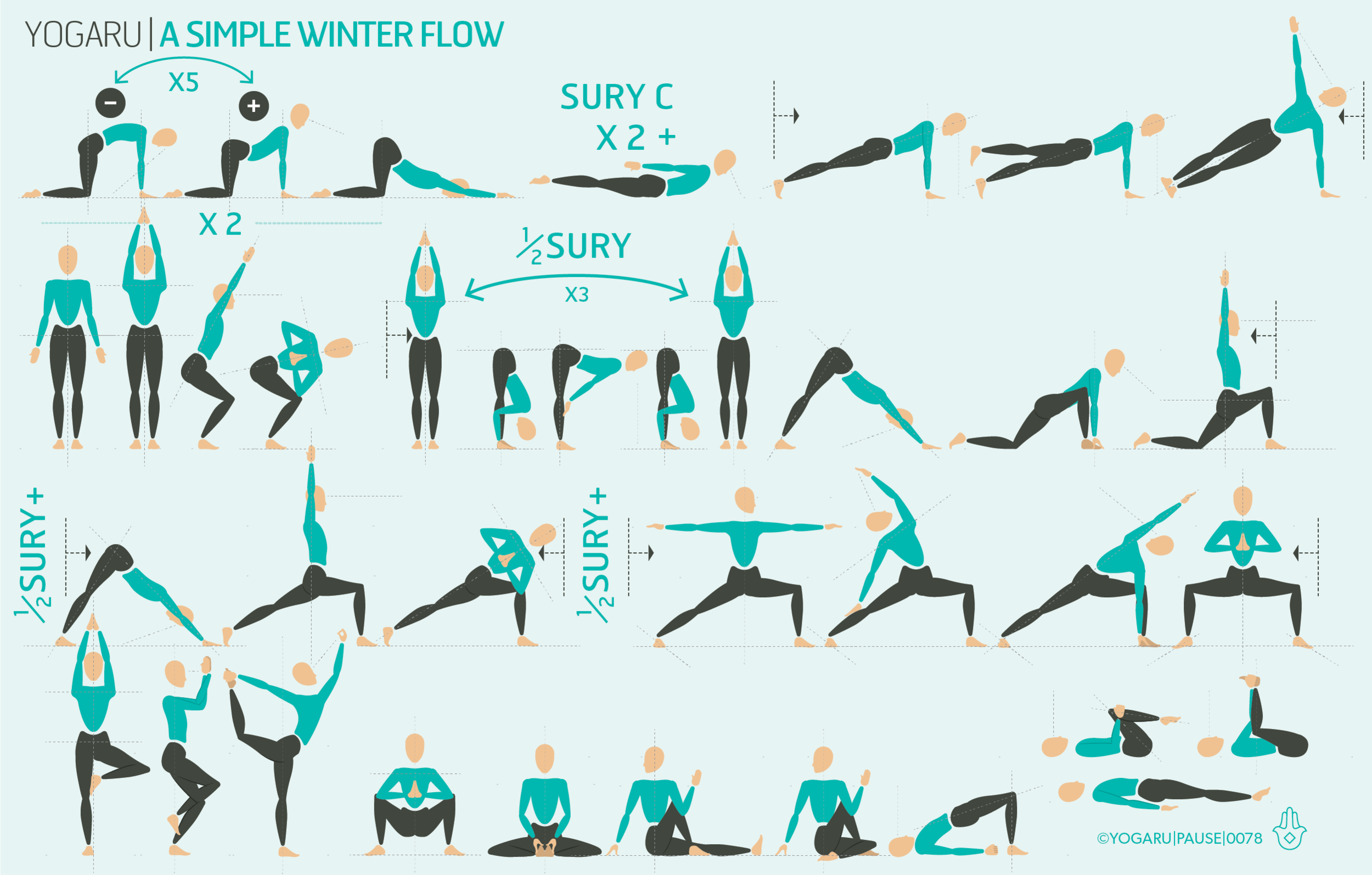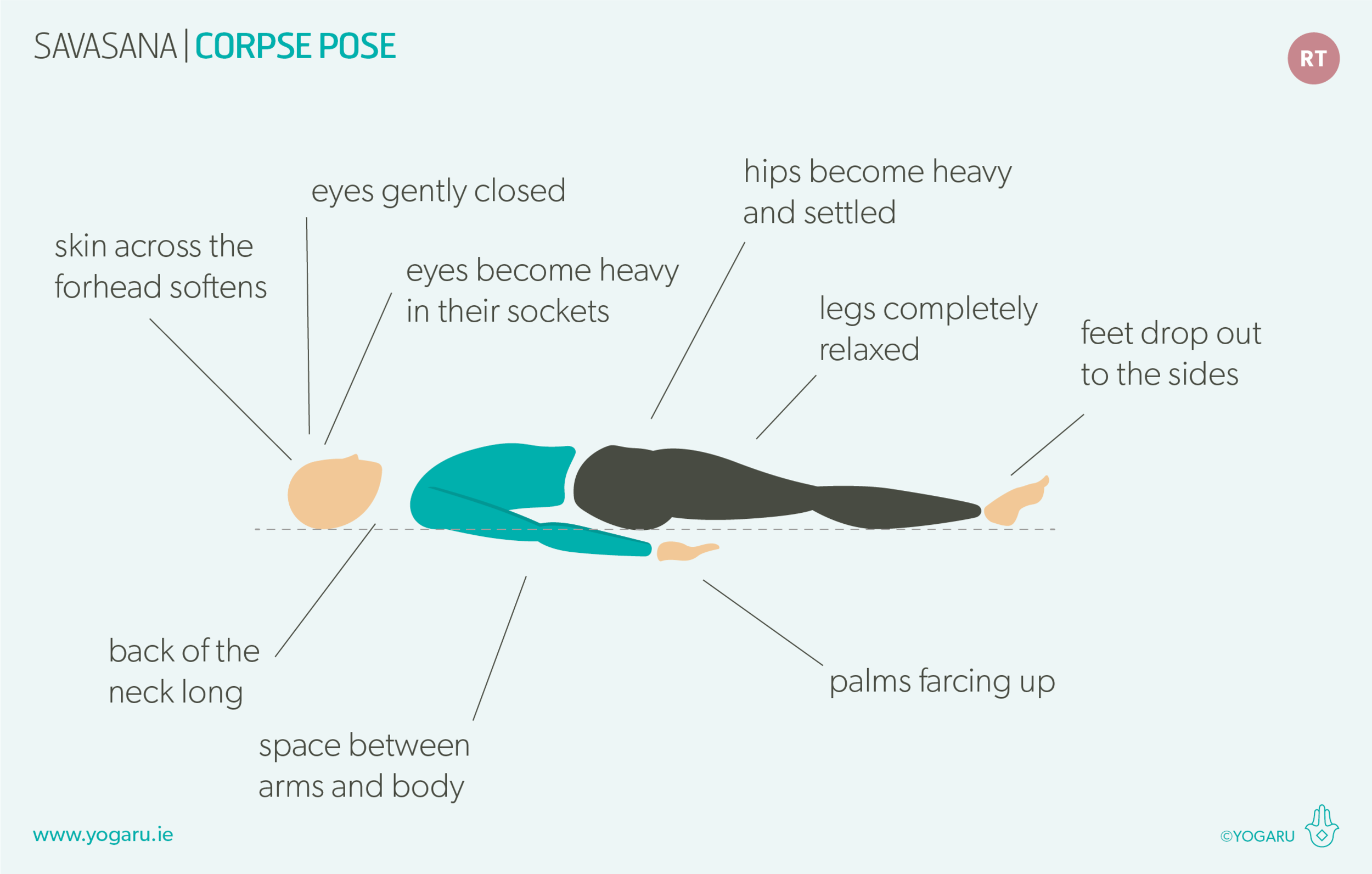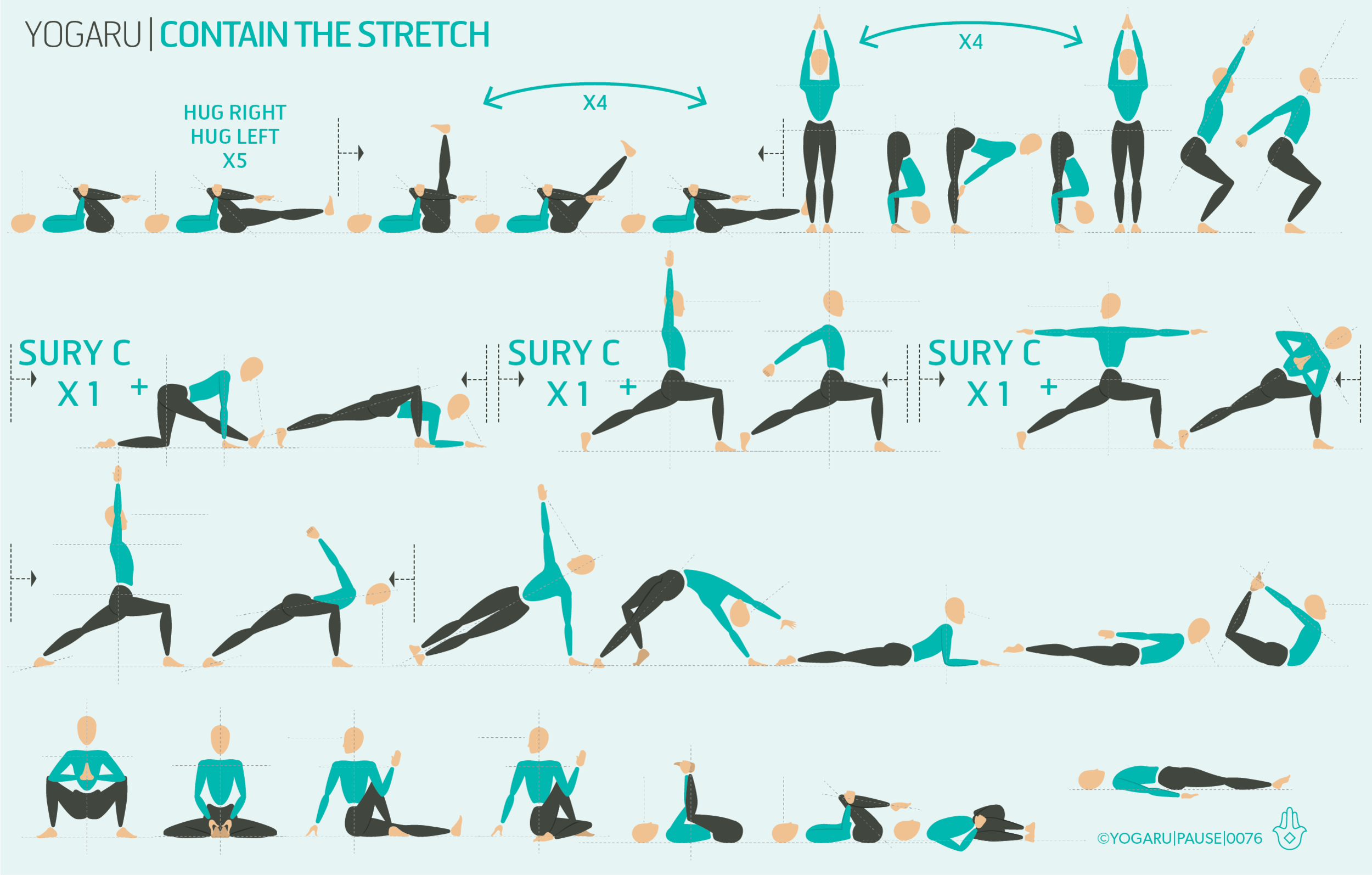COMFORT IN FAMILIARITY
Now that we’ve officially stepped into winter I find I’m looking for a slow and steady practice, full of familiarity, comfort, a nice bit of heat generation, and poses I know will nourish me. This sequence is based on a recent article I wrote for Wellfest on Mini Winter Yoga Flows – which gives you four mini flows to combat four different winter challenges. Here I have given you an option to include a bit of everything – from standing poses, twists, backbends and hip openers – all in one sequence that will help support you over the winter months.
WARMING FROM THE INSIDE OUT
The gradual change through the seasons from Summer to Winter is much harder on the system than the change from Winter to Summer. It takes a while to get used to the colder days, and to make it even harder, as the weather adjusts we often have very mild days mixed with bitterly cold days. Twists fire up your internal generator and and get your circulation going. Warming yourself from the inside out is a much healthier and sustainable form of heat than cranking up the heating. This sequence also has lots of standing poses which utilise the big muscles of the legs and quickly generate a lovely bit of extra heat too.
STAYING WELL THIS WINTER
When it comes to a strong immune system prevention is better than cure. The gut produces 80% of the immune system. Backbends and twists stimulate the lining of the gut to help boost and maintain a strong immune system, and keep you fighting off those winter bugs. This is not the time of year for embarking on extended intermitted fasting! You need all the warming winter earthy foods and spices to help fuel every cells of the body, and keep you thriving over the winter months.
WINTER BLUES
You might find you are more inclined to feel more emotional and stressed at this time of year. It may be a consequence of work pressure, family commitments or just the lack of daylight. Symptoms of stress crop up in many different way – you might feel tension in the hips or shoulders, a busyness of the mind, a lack of focus or a general lethargy and tiredness. We hold physical and emotional tension in our hips. When we are stressed the muscles of the hips tense ready for fight or flight. This causes the body to hold physical tension as a result of the emotional tension. When you release the physical tension through hip openers you release the emotional tension too.
EXPLORING YOUR WINTER FLOW IN YOUR PRACTICE
As you run through this sequence keep it slow and steady to help get the wellness benefits from the poses, soothe a busy mind and regulate your energy levels. The Surya Namaskaras are the adaptogens of the yoga world. When you need calming they calm you, when you need energy they energise you! Yoga can be your most supportive method of self care. Your time on your mat can be the answers to all that ails you over the coming months.
ALIGNMENT CUES
Print out the tips below, along with the sequence, and stay happy and healthy this winter:
Start by deeping and slowing down your breath with your five rounds of cat/cow.
For your two Sun Salutation Cs take Salabasana/Locust instead of cobra to strengthen the muscles of the back and stimulate the gut and immune system.
Pause in Parivrtta Utkatasana/Revolved Chair for at least five deep breaths to warm up the system, stimulate the gut and strengthen the lungs.
In your three standing balance poses press strongly into your standing leg and firm the muscles of the buttocks to find a strong foundation.
Allow yourself a restful Savasana/Corpse pose and absorb the benefits of your time invested in your wellness.
To save the images for personal use click and hold down the image until the ‘save image’ option appears; on Mac hold down ‘control’ and click the image to get the option box; on PC right click on the image to get the option box. Scroll down in the ‘option box’ and click ‘save image’.
Ruth Delahunty Yogaru




